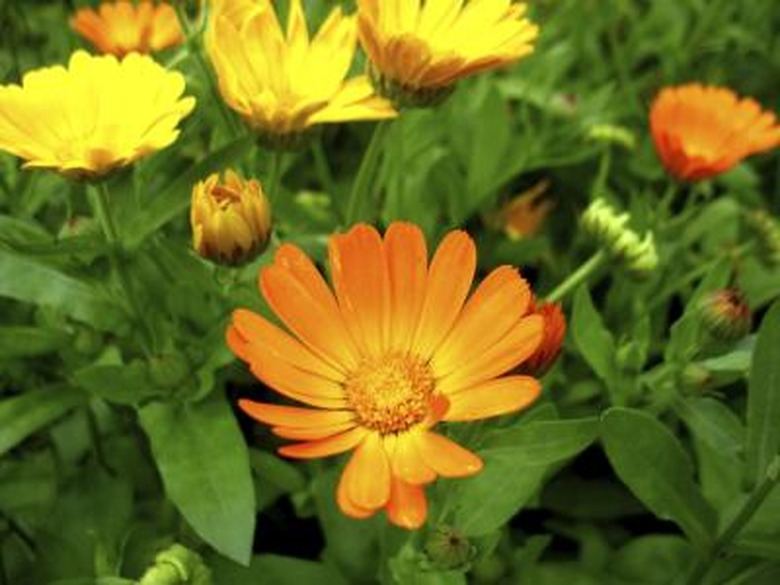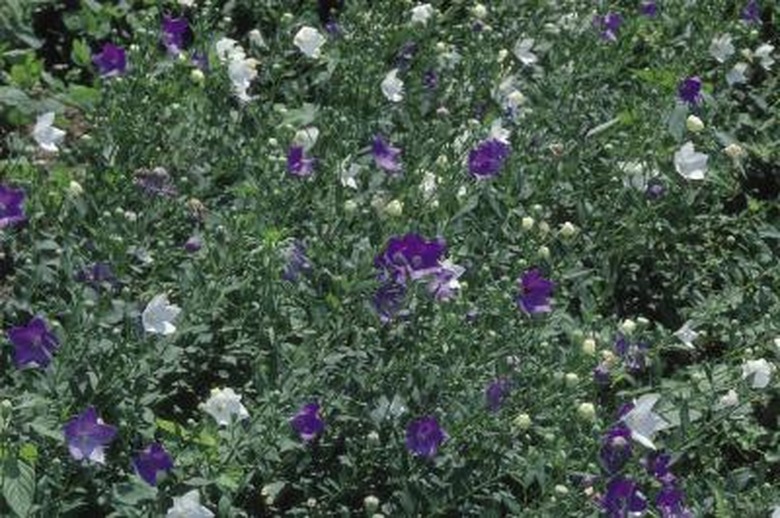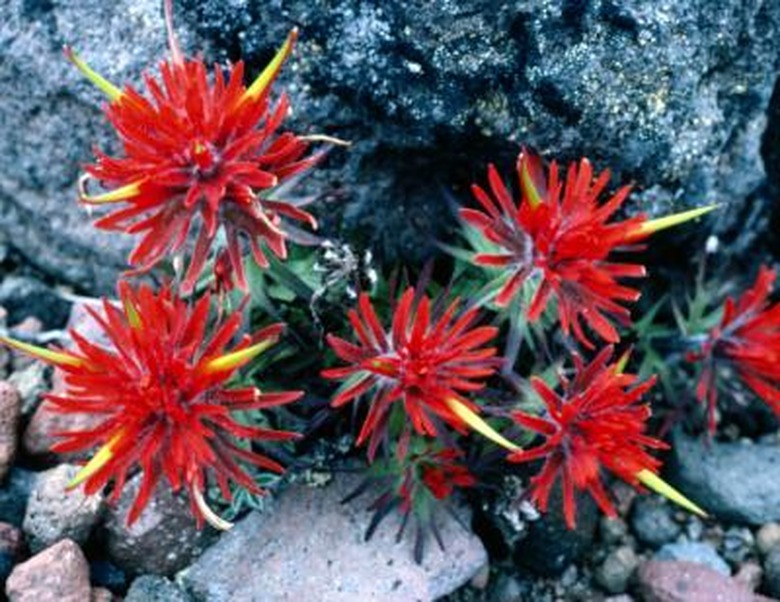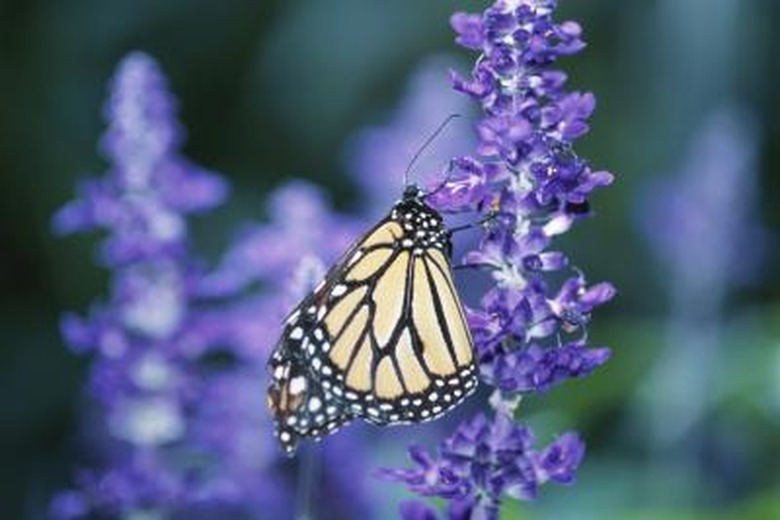Perennial Flowers That Bloom From Spring To Fall
Not all perennial flowers bloom for short periods such as from spring to summer or summer to fall. A variety of colorful perennials begin blooming in the spring and continue to bloom into the fall. They bloom over a long period in both the hot southern states as well as in northern states in varied climates.
Desert Marigold
Hardy desert marigold brightens the landscape from March to November with mounds of bright yellow, daisy-like flowers in full sun to partial shade. It can grow in well-drained, clay, gravelly, loamy, sandy, and dry soil with little to no fertility. Even the hottest temperatures won't wilt this sunny flower. Marigold can withstand temperatures as low as 32 degrees Fahrenheit. It's drought-tolerant and will grow quickly when watered on a regular basis. Desert marigold reaches a height of 1 to 1 1/2 feet and 2 feet wide in its native territory from west Texas to Arizona, southeast California, Utah, Nevada and New Mexico.
Trailing Windmill
Trailing windmill, also called trailing four o'clock, is a sprawling vine reaching up to 10 feet across along the ground. The brown vine is covered with medium green foliage, which is the backdrop for the light lavender to pink-purple flowers blooming from April to October. To the untrained eye, the singular flower is actually a cluster of three flowers combined. Its native range extends from Texas, westward through Arizona, New Mexico, Nevada, southeast California, southern Utah, Colorado and Oklahoma. Perennial trailing windmills prefer full sun and sandy to gravel-based soils.
Wholeleaf Indian Paintbrush
Wholeleaf Indian paintbrush loves the sun and heat. This hardy ground cover reaches 1/2 inch to a little over 1 foot tall. It has multiple gray stems covered with pale green to white foliage and a flower spike with bright red bracts, which hide the greenish, dark-red tinted flowers. The long-lasting display of blooms begins in March and lasts to September throughout its native territory of Texas, Colorado, Arizona and New Mexico. Leave the plant where it will grow, because transplanting may kill paintbrush, according to the Lady Bird Johnson Wildflower Center. It grows in gravelly soils in full sun and the roots may seek to leech nutrients from the roots of nearby grasses.
Rose Vervain
Attract butterflies to the landscape with the fragrant clusters of lavender to rose pink flowers of perennial rose vervain. They bloom from February to September at the tips of the stems in a flattened circle. Rose vervain forms dense mats along the ground, reaching up to 2 feet tall. The plant has light green foliage and is covered with long white hairs that spread outward. It flourishes in its native environment stretching from Florida in the south, up the east coast to Pennsylvania over to Michigan and westward to Texas. Vervain adapts to moist or dry soils containing gravel, sand or loamy, acidic soils as long as they're well drained. Plant vervain in full sun to partial shade.
References
- Lady Bird Johnson Wildflower Center: Baileya Multiradiata (Desert Marigold)
- Lady Bird Johnson Wildflower Center: Allionia Incarnata (Trailing Windmills)
- Lady Bird Johnson Wildflower Center: Castilleja Integra (Wholeleaf Indian Paintbrush)
- Lady Bird Johnson Wildflower Center: Glandularia Canadensis (Rose Vervain)




